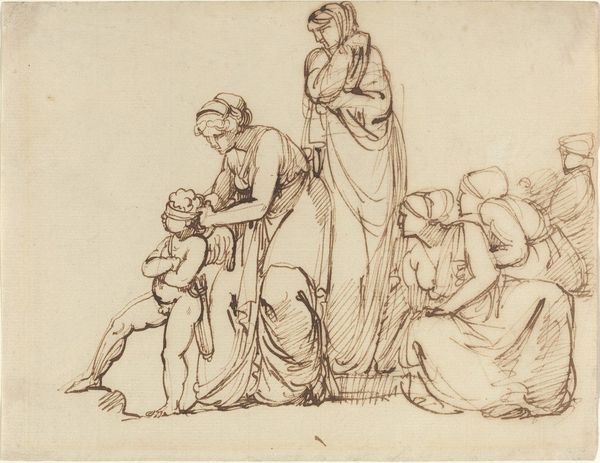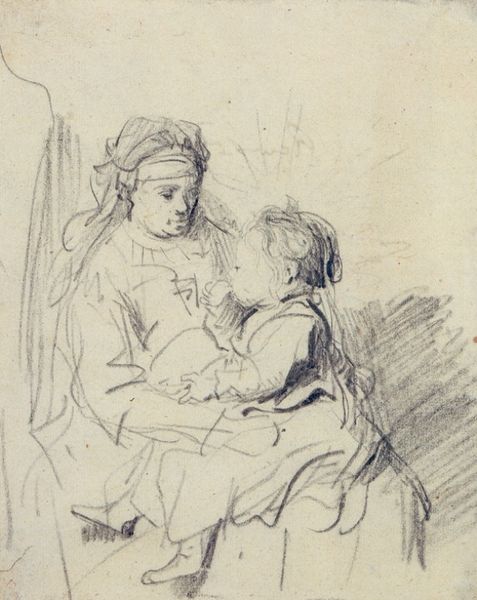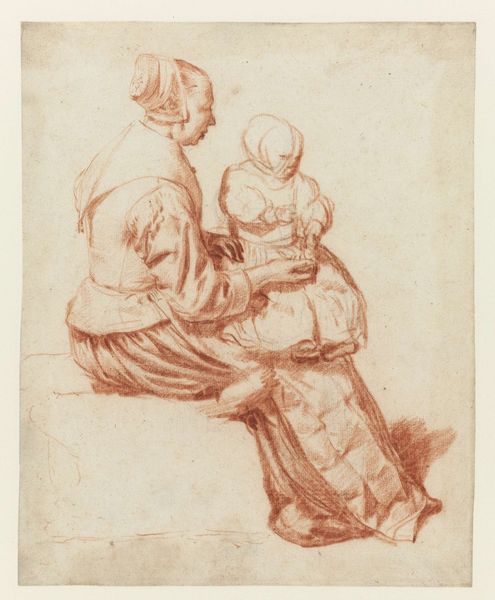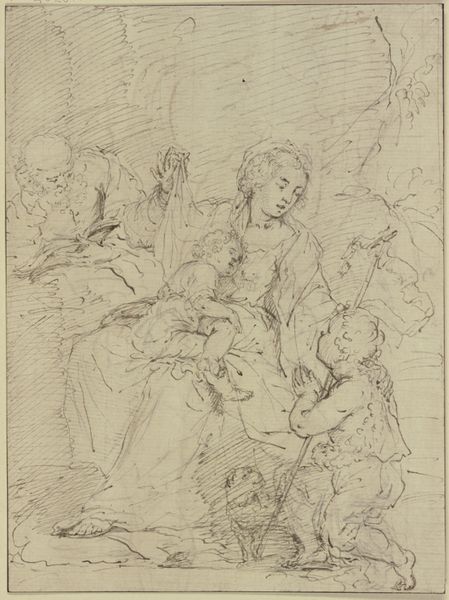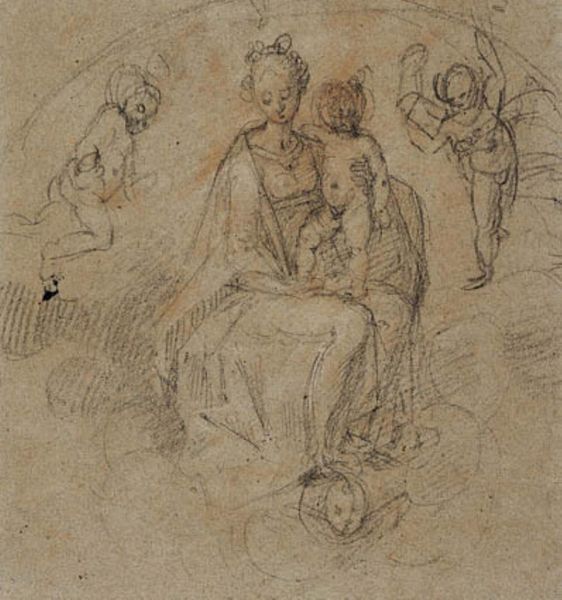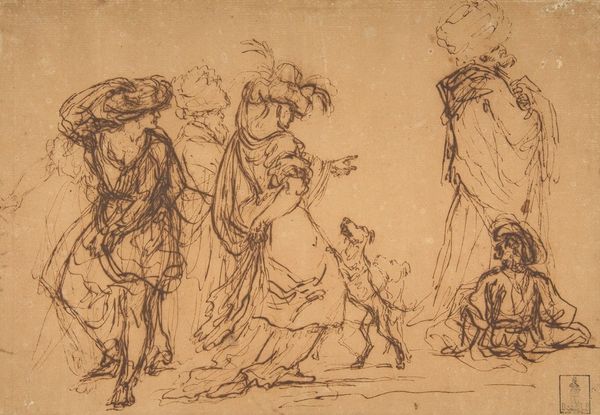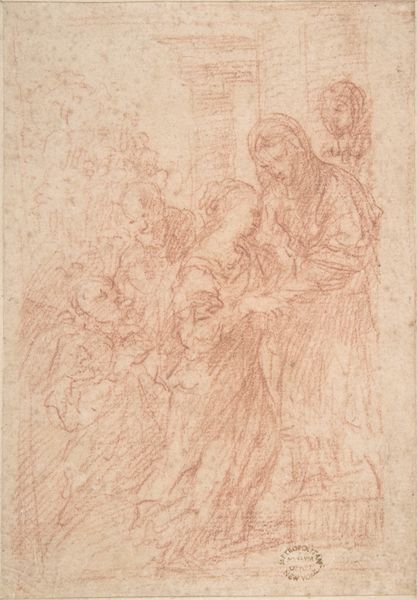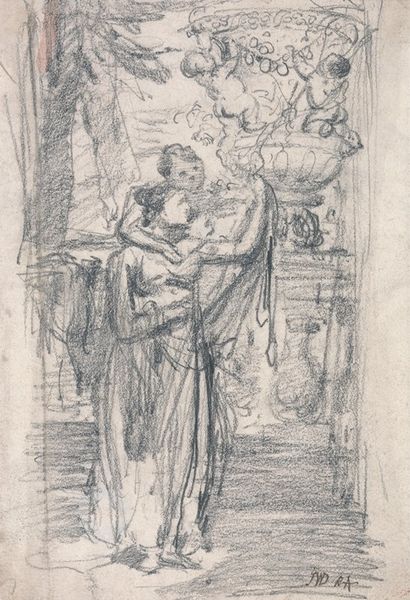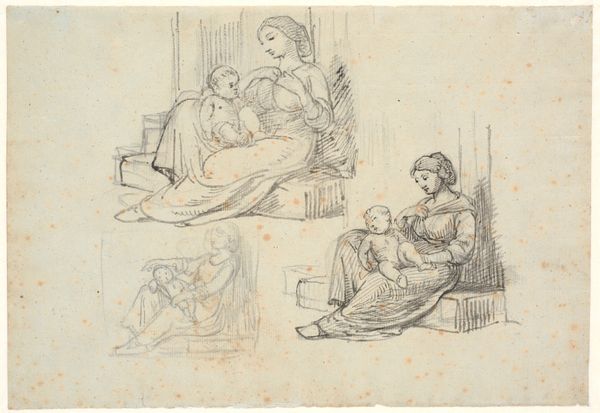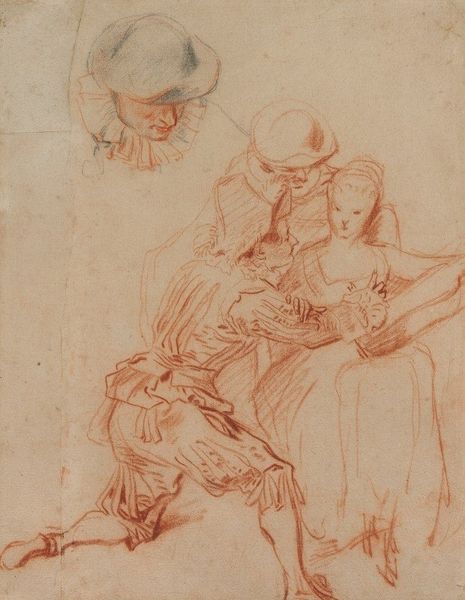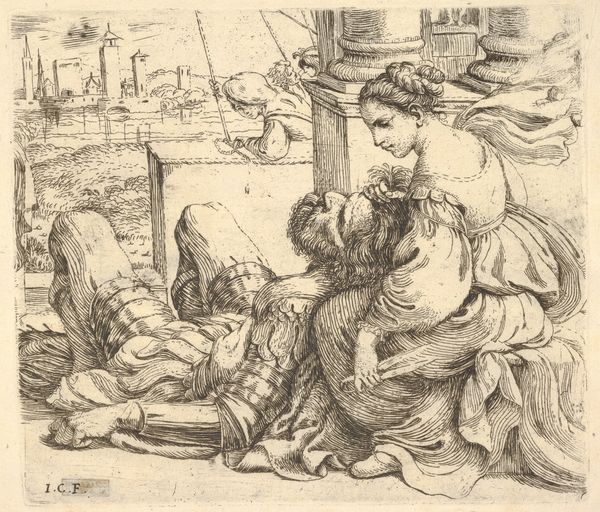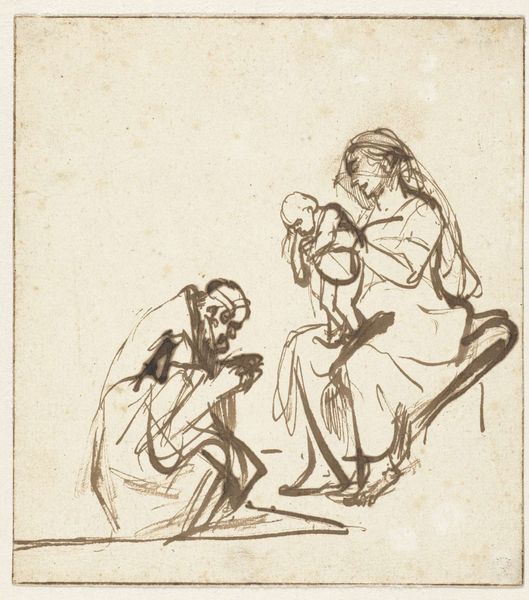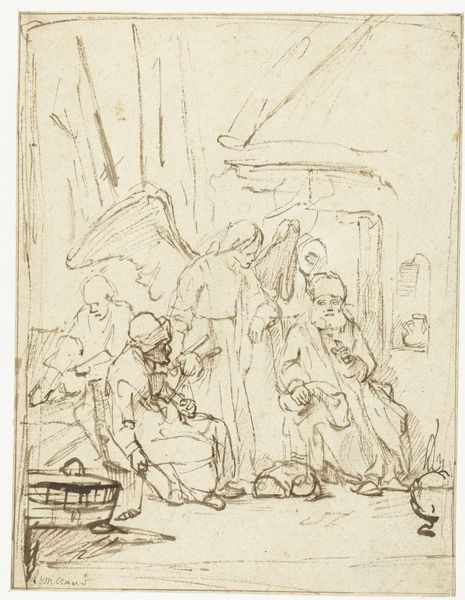
drawing
#
drawing
#
baroque
#
dutch-golden-age
#
figuration
#
genre-painting
Dimensions: 18 x 15 cm
Copyright: Public domain
Editor: Here we have "A Woman with a Child Frightened by a Dog," a pen and ink drawing by Rembrandt van Rijn, dating back to 1636. There's such a palpable sense of domestic disruption and raw emotion conveyed with such simple materials. What stands out to you in terms of its artistic choices? Curator: It's crucial to look at the economic circumstances of 17th-century Holland. Pen and ink weren't just aesthetic choices. What kind of patronage was Rembrandt working under that led him to produce drawings like this rather than, say, large-scale history paintings? Consider the paper itself - the materiality of the support is integral to our understanding. Where was this paper sourced? What was its cost relative to other art supplies? These economic factors dictated much of what was being created, democratizing artmaking and allowing new themes from daily life to take center stage. Editor: That’s a fascinating point. I hadn’t considered the paper itself as a reflection of accessibility and changing artistic consumption. The sketch-like quality now seems less about spontaneity and more about efficient material usage! Curator: Precisely! Think about the societal emphasis on trade and mercantile success during the Dutch Golden Age, the culture’s impact and how this translates even into drawing production and style itself. How accessible or costly would an etching, or painting have been at that time? What decisions might artists have faced? These practical limitations shaped his art just as much as his artistic genius did. It reminds us of the connection between what he wants to depict and how available are the necessary materials and means to do so. Editor: So, by understanding the means of production – the cost of materials and the context of patronage – we gain a much deeper insight into the artistic choices on display in the artwork. Curator: Exactly. By connecting Rembrandt's work with tangible resources, this expands how we can fully contextualize his artistic choices.
Comments
No comments
Be the first to comment and join the conversation on the ultimate creative platform.
